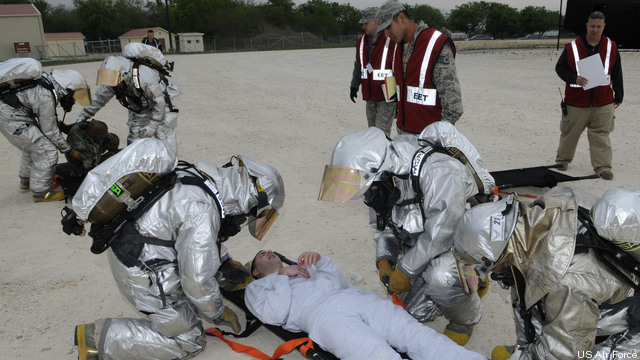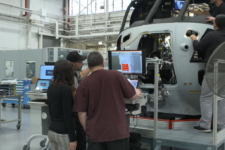
WASHINGTON: One of the grand old men of biodefense, Dr. Matthew Meselson, left his Harvard lab and came to Washington to call for greater international cooperation in monitoring new diseases, whether they arise in the wild or in the lab. The Department of Homeland Security’s process for reviewing potentially dangerous research, he said at an event hosted yesterday by the Federation of American Scientists, was a model on which to build across the US government and world-wide.
Asked whether Republicans in Congress would tolerate anything that smacks of arms control, Meselson said that international cooperation was the only way to safeguard the country against biological threats. “We’re protecting against a devastating epidemic that comes out of China and kills all the Americans,” he said, referring to the recent outbreaks — bird flu (H5N1) and Severe Acute Respiratory Syndrome (SARS) — that have started in Asia. “Infectious agents don’t stop at frontiers, they don’t have passports.”
The controversial arms control treaties limiting, say, anti-missile defenses, nuclear weapons, or military activity in space are “very different” from international cooperation against disease, Meselson said, whether those diseases arise naturally or are bred in a lab. Arms control detractors like to point out that the Soviet Union cheated massively on the 1975 Biological Weapons Convention, which Meselson was a crusader. But the only known bio-attack on the United States, the anthrax letters that killed five people in late 2001, appears to have originated not from abroad but from within America’s own bio-defense complex, with the FBI’s suspicions — and Meselson’s — centering on Bruce Ivins, a researcher at the Army’s Fort Detrick laboratory, who killed himself as the investigation closed in. That fact puts a premium on how the US monitors and reviews its own scientists.
“The good news is that it’s now eleven years since the anthrax letter attacks,” Meselson said. “There is no one out there that knows how to do it and wants to do it” — so far.
The model Meselson advocates for oversight of potentially dangerous research is the system used by the Department of Homeland Security. Like any grant-giving agency, DHS has a process to determine whether proposed projects are scientifically rigorous and worthy of funding. What’s different and “marvelous” about the DHS system, Meselson said, is an additional layer of oversight, specifically concerned with whether projects are dangerous. A “compliance review group” of high-level officials — “the general counsel, the deputy secretary, the assistant secretary for science, the main intelligence guy” — with a score of permanent staffers looks at proposals, interviews investigators, and sometimes even conducts site visits before categorizing a project either as unproblematic, as a potential violation of the Biological Weapons Convention, or as having potential for “dual use” — i.e. for both medical and lethal purposes.
But plenty of other agencies fund potentially dangerous research, Meselson said, from the Department of Defense to the Department of Agriculture, and they could all learn something from the Homeland Security approach. He proposed that the other agencies send liaison officers to participate in the DHS reviews, if only as observers. The long-term goal, he said, should be to develop a “harmonized” procedure across all federal agencies, one that the United States could then present as a model to the next international conference to review and update the Biological Weapons Convention, scheduled for 2016. By taking such a lead, the US could inspire — or shame — other countries into better supervising their own biological research. That’s an essential step as the know-how to manipulate DNA spreads around the world.
Meselson emphasized that he doesn’t want to stop all potentially dangerous research, only to monitor it. Asked about the recent publication of genetic details of how the bird flu virus, H5N1, might mutate into a more contagious form, Meselson said flatly, “I wouldn’t have stopped it… It’s good work.” While critics charge that publishing such data could give terrorist groups a guide to genetically engineer their own biological weapons in the lab, Meselson said the danger is slim compared to the value of giving public health researchers a guide on what mutations to watch for in the wild. Indeed, he’d like to see much more research in this area, with the ultimate goal of creating cheap, simple tests that a public health worker in, say, rural China could use to monitor potential outbreaks.
It would be self-defeating to cripple research into potentially dangerous topics, Meselson argued. “You want to know about the things that are dangerous,” precisely because they are dangerous, he said: “Why study athlete’s foot but not cancer?” The cure is not to stop working in dangerous areas, but to do it right.
Army inching towards late FY25 Chinook Block II full-rate production contract
Boeing recently announced the Block II helo’s first maiden flight and plans to deliver the first production aircraft to the service in the coming weeks.


























